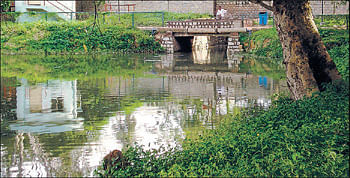
Citizens and members of Lalbagh Walkers’ Association have been complaining about the menace for several months, but the civic agencies have been unresponsive. Sewage lines are not properly separated from stormwater drains and civic agencies are yet to draw up a comprehensive plan to stop the filth from entering the lake.
“For the past two months, the stink from the lake has been unbearable,” says Saroja, a walker at Lalbagh.
“People urinate in the drain which leads to the lake thus contaminating the water body,” said Shantha, another walker.
Chikkakere, a small water body near the lake, receives sewage from Kanakanapalya Gate, Siddapura and Ashoka Pillar Road. There are manholes in these places, but again, there is no proper separation of sewage lines and stormwater drains.
Although a bund separates the smaller lake from the main lake, water from it overflows into Lalbagh Lake which is home to a variety of ducks, swans and fish.
Treated water
Treated water from a ‘sewage water wet well’ located close to the stormwater drain is used for watering trees and plants at the garden.
“We cannot block sewage from entering the lake, as it comes through an inlet and into the lake. Water in the smaller lake is contaminated, but as it flows towards the main lake, it does get filtered naturally. However, desilting is required,” said H M Krishnappa, Deputy Director of Horticulture, Lalbagh Botanical Gardens.
Horticulture Director N Jayaram said drains and manholes inside Lalbagh are maintained by the Bangalore Water Supply and Sewerage Board (BWSSB).
BWSSB Chief Engineer T Venkataraju said whenever there is heavy rain, sewage seeps into the lake. “We have started replacing the pipelines near South End area, which will completely stop the sewage from entering the Lalbagh stormwater drain,” he said.